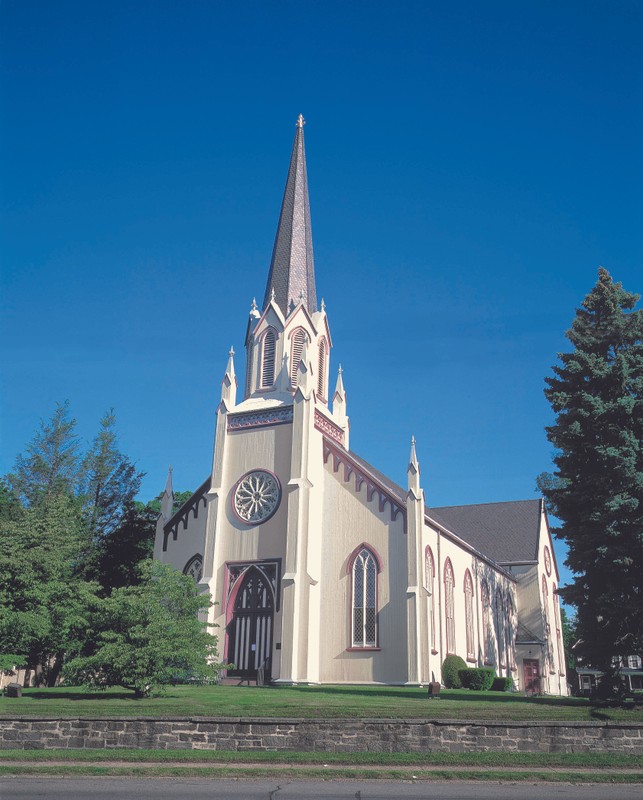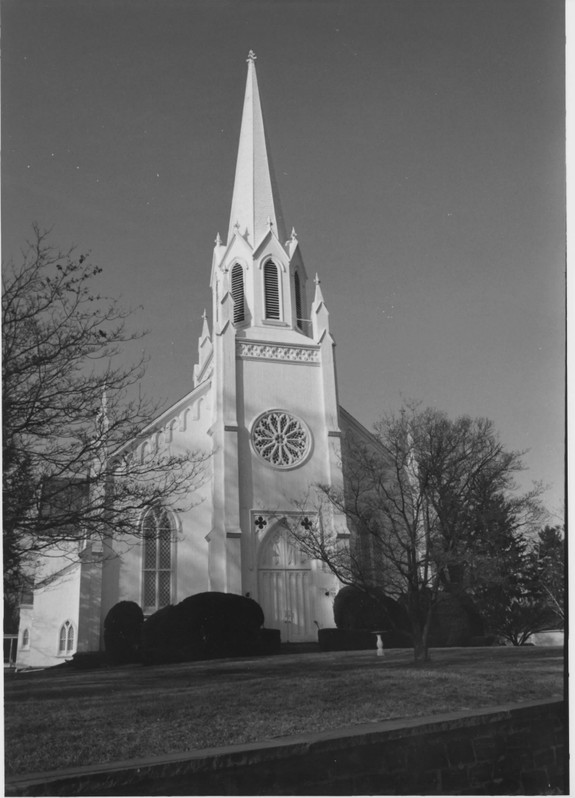Mamaroneck United Methodist Church
Introduction
Text-to-speech Audio
Images

Mamaroneck United Methodist Church

Backstory and Context
Text-to-speech Audio
The Mamaroneck Methodist Congregation had two former churches before constructing the present Carpenter Gothic style building. The first church was built in 1814 but was quickly lost to fire on February 12, 1845. The second church was built in the Greek Revival style on May 8, 1845, on the same site as the first church. This building was purchased by the town and became the Mamaroneck Town Hall in 1879. Today the building serves as the American Legion Hall in Mamaroneck.
By the 1850s the congregation needed more space in the 1850s and purchased a parcel on the Post Road in 1859 where the church currently stands. Some church records credit a Mr. Carreja as the architect, but it was built by Solomon Gedney, who was from an old Mamaroneck family and a trustee of the church. The Gedneys that were a family of shipwrights and carpenters.The church is one-story; it has a Sunday school room below and a community room in the rear built in 1869.
Other prominent members of the church were Bradford Rhodes, a publisher, and editor from Bankers Magazine, and Rhodes’ Journal on Banking who donated half of the funds for the church's parsonage. Another was Thomas L. Rushmore, a trustee that was a noted New York City dry goods wholesaler and moved to Mamaroneck in 1856.
The Carpenter Gothic style was popular in rural towns and was commonly associated with Episcopal churches. The abundance and cheaper price of wood over stone made the translated of the Gothic Revival style into wood structures. Three Methodist churches in Westchester showcase this style including the Mamaroneck church. Simplicity is a demanded concept in the Methodist religion which explains the lack of any additional "gingerbread" embellishments.
Sources
1.Mamaroneck Methodist Episcopal Church; 1813 - 1913. Centennial YearBook. In Historical Sketch by Charles C. Holden. Mamaroneck, New York. 1913. p. 17 - 18.
2.National Register of Historic Places Inventory-Nomination Form, Mamaroneck United Methodist Church, Westchester County Historical Society Archives, Accessed November 29, 2020
3.Williams, Gray. Picturing Our Past: National Register Sites in Westchester County. Elmsford, New York. Westchester Historical County Historical Society , 2003.
Picturing Our Past: National Register Sites in Westchester County. Gray Williams.
National Register of Historic Places
